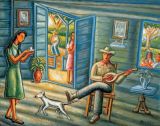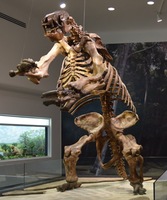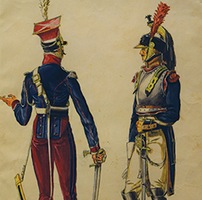ATTENTION: The Lemerand Wing will be closed for an exhibit installation on Monday, March 24 through Friday, March 28.
The L. Gale Lemerand Wing features the Cuban Foundation Museum, the Prehistory of Florida Gallery, and exhibits on Weaponry from around the world. The L. Gale Lemerand Wing also contains several locations for rotating temporary and traveling exhibitions.

The Cuban Foundation Museum is home to one of the most important collections of Cuban fine and folk art outside of Cuba. The collection chronicles 300 years of Cuban history and art in more than 200 objects.

The Museum of Arts and Sciences (MOAS) has dedicated a portion of the museum to the prehistory of Florida. This section of the Museum includes preserved insects and butterflies, shells and teeth, along with the remains of a giant ground sloth, mastodon, and glyptodont that were found in our own backyard!

The various pieces of armor and variety of weapons and firearms in this gallery represent the artistic merit and function of weaponry of the past. From hunting to organized warfare and courtly life; from the ivory-inlaid German crossbow to the murderous Napoleonic swords, muskets and sabers on dipslay, these important objects were created from exquisit woods and steel with silver inlay, gold and other precious materials brought together by fine craftsmanship and beauty of form.